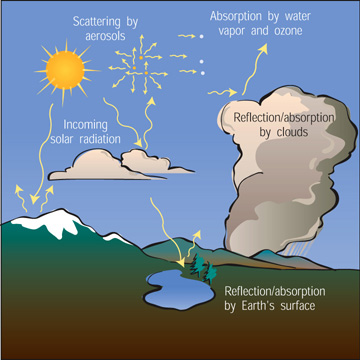This picture shows what happens to energy from the Sun once it gets to Earth.
Click on image for full size
NCAR
When Energy Gets to Earth:
Once energy from the Sun gets to Earth, several things can happen to it:
- Energy can be scattered or absorbed by aerosols in the atmosphere. Aerosols
are dust, soot, sulfates and nitric oxides. When aerosols absorb energy, the
atmosphere becomes warmer. When aerosols scatter energy, the atmosphere is
cooled.
- Short wavelengths are absorbed by ozone in the stratosphere.
- Clouds may act to either reflect energy out to space or absorb energy, trapping
it in the atmosphere.
- The land and water at Earth's surface may act to either reflect energy
or absorb it. Light colored surfaces are more likely to reflect sunlight,
while dark surfaces typically absorb the energy, warming the planet.
Albedo is the percentage of the Sun's energy that is reflected back by
a surface. Light colored surfaces like ice have a high albedo, while dark colored
surfaces tend to have a lower albedo. The buildings and pavement in cities have
such a low albedo that cities have been called "heat islands" because
they absorb so much energy that they warm up.
Last modified July 12, 2004 by Lisa Gardiner.
You might also be interested in:
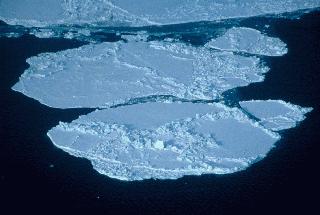
The sea ice that floats on the Arctic Ocean is covered with snow all winter. The snow-covered ice is bright white so it absorbs very little of the solar energy that gets to it. And during the Arctic winter,
...more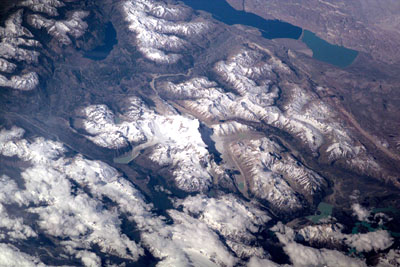
This picture of the Earth surface was taken from high above the planet in the International Space Station. In this view from above, we can see that there are lots of different things that cover the Earth.
...more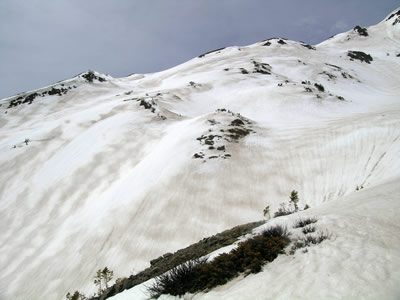
Scientists are learning about how dust from wind storms is affecting the snow pack in Colorado. When the winds are right and the desert is dry, dust blows to the east from U.S. Southwest. When this happens,
...more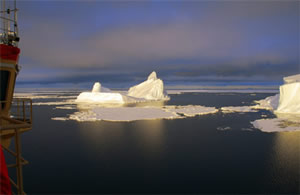
Most of us do not live in polar regions. We do not come in contact with icebergs or ice sheets very often. Most of us have only seen these things in photographs. However, no matter where you live, the
...more
“Taiga” is a Russian word meaning dense evergreen forest. The taiga biome, the largest biome on land, is full of dense evergreen forests. Located just south of the tundra in the northern parts of Europe,
...more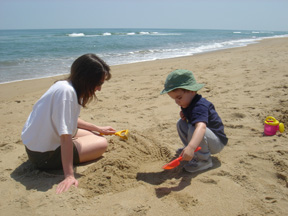
Energy from the Sun is very important to the Earth. The Sun warms our planet, heating the surface, the oceans and the atmosphere. This energy to the atmosphere is one of the primary drivers our weather.
...more
Scientists are sending tiny airplanes buzzing through the sky to discover how air pollution can impact weather, climate, and global warming. The tiny airplanes look like regular planes but they have only
...more


